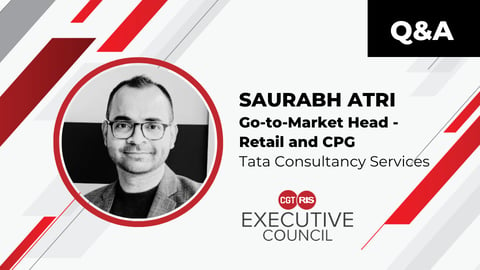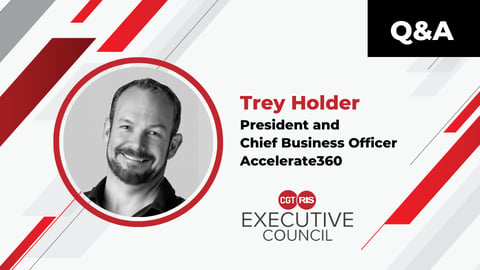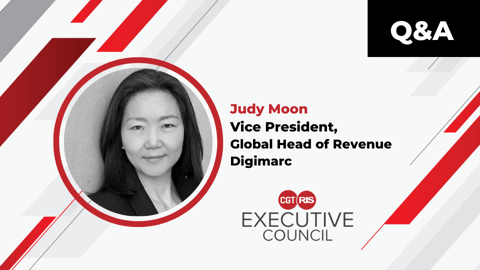Thriving Through Change: Insights from NTT DATA's Jeff Van Pelt
With a career spanning three decades in the consumer packaged goods and technology space, Jeff Van Pelt has earned his stripes as a true industry veteran.
Van Pelt honed this expertise through stints with industry giants like IBM and SAP before joining the team at NTT DATA, where he advises businesses on how to achieve differentiation and drive substantial value through the strategic use of technology. A self-described data enthusiast, Van Pelt’s deep understanding of the industry makes him a visionary leader, committed to shaping the future of consumer goods products through innovation and a future-facing outlook.
As part of the CGT/RIS Executive Council, Van Pelt shares his decades' worth of knowledge in the consumer goods industry with fellow members, offering insights that serve as a compass for staying ahead in a business that is anything but predictable.
EC MEMBER SHARES
How long have you been with NTT Data Business Solutions?
I’ve been at NDBS approaching five years, but have been working in the CPG industry for over 30 years.
What’s the best piece of advice you’ve ever received?
Under promise and over-deliver
What are the three things you’d bring if you were stuck on a desert island?
Great question. I’d probably bring a Firestarter, a solar generator to charge my phone, and a picture of my family. I guess that’s four things, but oh well.
What do you wish you knew how to do?
I wish I knew how to play the piano. Some of my children are really good, and it makes me a bit envious. They obviously didn’t pick that up from their dad, so kudos to their mom!
CGT: You were a member of the Executive Council in the past. What do you think is one of the biggest differences about the state of the industry now?
One of the biggest changes I’m seeing is that CPG companies are finally realizing that data is an asset that needs to be managed. We’ve been talking about “turning data into insights” for decades, but now I’m seeing a shift, through technological advances, to making that a reality. The timing for that is good because with AI and other technologies that take data and from it create more data, it’s easy for a company to get buried in it if they don’t have a plan in place to utilize it.
CGT: What’s your sense of the industry's appetite for enterprise tech innovation today? I’m seeing a healthy appetite for enterprise tech innovation across the board. Cloud and SaaS offerings have a lot to do with it. This is especially true in the case of mid-market CPGs, who have been surviving with legacy systems and Excel spreadsheets.
The companies I talk with in this space realize that to meet their growth aspirations the current systems won’t get them there, so in this segment in particular, I see a significant uptick in enterprise transformation and enterprise technology.
CGT: Where do retailers and CGs need the most support when it comes to organizational and technological change?
The first thing companies need is a plan. Technology changes, particularly those that impact the entire company require a strong organizational change management plan. I think most companies realize this, but when we look at those that don’t we see frustrations, lack of adoption, and frankly a reduction in the value of the tech investment vis a vis those companies that had OCM as a core part of their technology decisions.
CGT: Where do companies tend to stumble most frequently in their transformations?
There are a few things to consider to avoid missteps in a digital transformation project. First, it needs to be a priority that comes from the C-Suite. Second, you need to bring your end users along for the ride and involve them in the process early.
Lastly, don’t bite off more than you can chew. Transformation projects that fail tend to have a common theme of trying to do too much all at once, so prioritization of what technology components will deliver the most benefit to the organization is a key criterion to consider versus “let’s do everything”.
CGT: What should today's tech leaders have on their radar?
Tech leaders need to look at how technology investments are going to make their organizations more agile. With continuing geopolitical disruptions, economic uncertainty, and a variety of other factors, companies need to invest in technology that will allow them to adapt and advance to changing market conditions.
CGT: How can manufacturers become stronger collaborators with retailers?
Having started out my career as somewhat of a data geek, I would have to say it starts with sharing data. As an industry, we have a lot of processes that are supposed to foster collaboration: joint business planning, category management, supply chain integration, etc. Those programs and processes are flawed unless both parties come to the table with data that is going to benefit both parties in gaining access to the consumer.
At my local grocery store, I’ve made an observation that is turning into a trend in the sports drink section of the store: In this particular case, there are two dominant players. Brands A & B have similar facings and shelf placement. Brand B is almost always out of stock. One could assume that Brand B just sells better than Brand A, but my hypothesis is that Brand A is doing a better job working with the retailer to ensure service levels are maintained, perhaps through sharing data.
CGT: What are some of the emerging technologies that you think will bring about the most change in the next 5-10 years?
Obviously, AI is at the top of everyone’s mind, and for good reason. The potential for insights from AI will have a significant impact across the enterprise. From new product innovations to optimizing supply chains, and most certainly, consumer insights, AI will inevitably lead companies to more precision and predictable outcomes.
But while AI gets all the headlines, other technologies also hold promise to improve CPG business processes. Some of those include augmented and virtual reality, image recognition, and digital twins (particularly in manufacturing).








